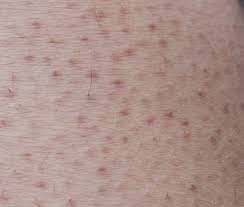Although global vaccination efforts against SARS-CoV-2 are underway, the public is urged to continue wearing face masks as a primary intervention to control transmission. Recently, US public health officials have also encouraged doubling down on masks as a strategy to counter elevated transmission associated with infectious SARS-CoV-2 variants.
Researchers at the U.S. Centers for Disease Control and Prevention reported that doubling masks increased effectiveness, but their evaluation was limited in the type and combinations of masks tested, as well as the use of forms of head instead of humans. To address these limitations, this study compared the adjusted filtration efficiency (FFE) of commonly available masks used individually, duplicated, or combined.
Methods
FFE covering the face was measured in 1 female volunteer (weight, 53 kg; height, 160 cm; head circumference, 56.0 cm) and 2 male volunteers with shaved faces (weight, 75 kg; height, 178 cm). ; head circumference, 58.5 cm). ; and weight, 76 kg; height, 175cm; head circumference, 55.9 cm, respectively), as described above.
In summary, FFE corresponds to the particle concentration behind the mask expressed as a percentage of the particle concentration in a chamber atmosphere enriched with sodium chloride particles [FFE% = 100 × (1 - particle concentration behind mask/environmental particle concentration)] measured during a series of repeated movements of the torso, head, and facial muscles as described in the Health Administration’s Occupational Safety and Quantitative Fit Testing Protocol.
Chamber temperatures were 22°C to 24°C and relative humidities were 42% to 52%. For replication of each procedure and cloth mask tested, the same mask worn individually served as a control.
For all cloth procedural mask combinations, the same procedural mask (Intco) was used for all, with the single cloth mask as a control. The institutional review board at the University of North Carolina at Chapel Hill waived the need for approval of the study, as well as the individual consent required for testing the device.
Results
Procedure masks worn individually by study volunteers showed a mean (SD) FFE range between 43% (2%) and 62% (11%).
On average, across all masks and volunteers, the addition of a second procedural mask improved the mean (SD) FFE from 55% (11%) in single-masking to 66% (12%) in double-masking.
Single-fabric masks performed less effectively (mean [SD] range FFE, 41% [12%] to 44% [12%]) than procedural masks.
Doubling a cotton mask improved FFE but could reduce breathability.
Although adding a procedure mask (mean [SD] FFE, 61% [13%]) over cloth masks provided modest increases in their FFE (mean [SD] range, 55% [10%] to 60% [14%] ]), overall performance was no different than using the procedure mask alone. In contrast, wearing a procedural mask under the cloth face covering produced notable improvements in overall FFE (mean range [SD], 66% [5%] to 81% [6%]).
Discussion
Disposable medical procedure masks are commonly used in healthcare and public settings during the COVID-19 pandemic. The FFE for procedure masks is generally lower than that of high-efficiency N95 respirators certified by the US National Institute for Occupational Safety and Health and equivalents of foreign origin (e.g., KN95).
However, many procedure masks available to the public are made from nonwoven polypropylene, the same high-efficiency filter media used in respirators. In fact, it is notable that improvements in the seal between the mask and facial skin dramatically improve FFE performance, suggesting that fit, not material , is the intrinsic limiting factor for procedural masks.
The results of this quality improvement study demonstrated that wearing a medical procedure mask under a cloth mask provided the improvement to FFE of all combinations tested. The improvement in FFE of procedure masks when doubled or when worn under reusable cloth face coverings is consistent with minimizing leakage between the mask and facial skin, including the bridge of the nose.
Limitations of this study are that we tested only 1 type of procedural mask and that 3 volunteers participated in duplicate evaluations. However, despite some variation among volunteers, the current results support the general conclusion that double-blinding improves FFE .
















